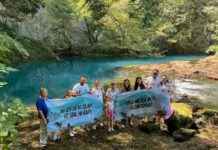In an effort to protect endangered species from potential disasters on Earth, scientists have put forth an ambitious plan to store their DNA on the moon. This lunar “Noah’s Ark” would act as a backup in case these species face extinction on our planet.
The proposed biorepository on the moon would house frozen biological materials, including live tissue samples from a variety of animal species. The ideal location for this facility would be the north or south poles of the moon, where the temperature remains a constant -200 degrees Celsius.
The scientists, as mentioned in the Oxford Academic journal BioScience, believe that establishing a base on the moon would provide an additional layer of protection for endangered species. NASA is also interested in these lunar poles due to the presence of ice, which could support a future human colony.
Leading organizations like Harvard and the Smithsonian are developing techniques to collect samples from threatened species, freeze them, and transport them to the moon. The first species to be included in this space storage initiative is the starry goby fish.
One of the main challenges of this project is managing the high radiation levels in space and ensuring the safety of the samples during transport. While existing biorepositories like the one in Svalbard, Norway, are designed to withstand threats on Earth, the moon’s extreme cold provides a stable climate that may not require a power source, making it an ideal location for this backup plan.
The scientists behind this initiative emphasize the importance of preserving biodiversity and creating a safety net against potential threats such as natural disasters, climate change, overpopulation, resource depletion, wars, and other risks on Earth. Their initial focus will be on cryopreserving animal skin samples with fibroblast cells.
By storing genetic material on the moon, researchers hope to ensure the survival of endangered species and contribute to the long-term preservation of Earth’s biodiversity. This innovative approach could serve as a crucial safeguard against the various challenges that threaten our planet’s wildlife and ecosystems.



